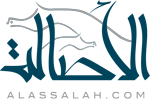By Casie Bazay, NBCAAM
As a mare’s age increased, so did her probability of producing female offspring.
Your mare is due to give birth, and you anxiously count down the days, wondering if it will be a filly or a colt. You might, however, be able to guess what sex your foal will be—and we’re not talking about your typical fetal sexing techniques. Researchers in Brazil recently determined that a mare’s or stallion’s age can impact the sex of their offspring.
Guilherme Ribeiro Valle, a veterinary medical professor at PUC Minas Betim in Brazil, and colleagues conducted two independent trials examining two separate equine populations:
- Trial 1 included all male horses registered with the Brazilian Association of Mangalarga Marchador from 1990-2011 and an equal number of randomly selected mares from the same registry;
- Trial 2 included 253 Brazilian military police horses born from the matings of 119 mares with 16 different stallions from 1989 to 2010.
In both trials, researchers categorized data according to horses’ parental age and noted the age gap between mated mares and stallions.
“The first trial showed a theoretical tendency, because we used a 1:1 population and observed the distribution of males and females inside that ‘artificial’ population,” Valle said. “The second trial (employed) a real population, showing not a theoretical tendency, but a real tendency.”
The researchers noted that the second trial’s conclusions supported those of the first. In both trials, the team determined that:
- As a mare’s age increased, so did her probability of producing female offspring. While mares aged 5 to 10 years produced 1.17 males per female offspring, the likelihood of male offspring dropped sharply for mares aged 10 to 15 (0.88 male per female) and even further for mares aged 15 to 20 (0.74 male per female). The trend reversed slightly for mares older than 20, which produced 0.78 male per female offspring.
- Stallions aged 5 to 10 produced roughly the same number of male and female offspring. However, as the stallion’s age increased, so did the probability of producing female offspring, with the highest probability existing for stallions aged 15 to 20 years (0.84 male per female). The trend reversed when stallions were 20 years or older, in which case the ratio increased to nearly 50/50 again.
- Mares and stallions of similar ages (plus or minus 5 years) produced roughly the same number of male and female offspring. However, older stallions mated with younger mares produced more male offspring, with stallions 15 or more years older than the mare having a 1.53 probability of producing male offspring for every female.
- Meanwhile, older mares mated with younger stallions were more likely to produce female offspring, with mares mated with stallions 10 to 15 years younger having the highest probability of female offspring (1.29 female per male).
The team concluded that, with the exception of very young or very old animals, the mare’s and stallion’s age influenced the offspring sex ratios by increasing the probability of producing a female. Further, this effect was influenced “more strongly by the mares than by the stallions,” the team concluded.



